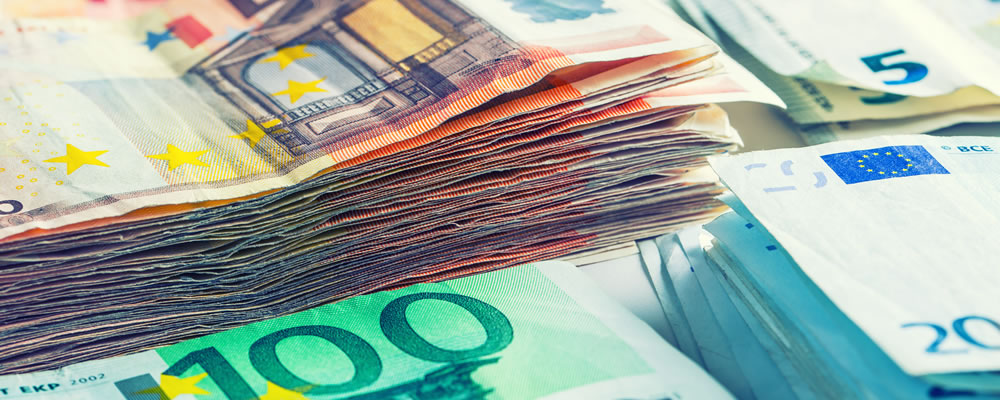As worries over the stability of the Italian banking sector have eased, the Euro US Dollar exchange rate has been trending narrowly, particularly as Eurozone data has bettered expectations.
- Euro rebounded from Italian referendum slump – Investors optimistic over future of Italian banks
- EUR GBP exchange rate dented by soft Brexit speculation – Comments from Chancellor Hammond raised hopes of continued single market access
- Strong services data kept Fed on track for December rate hike – US Dollar supported by high odds of imminent monetary tightening
- ECB predicted to extend quantitative easing on Thursday – EUR exchange rate volatility anticipated in response to policymaker commentary
Demand for the Pound, meanwhile, has increased in response to the latest government comments on Brexit, which suggested that the UK could maintain its current level of access to the single market.
Fears of Early Italian Election Dented EUR Rates
Euro exchange rates were weighed down on Tuesday afternoon after Italian Interior Minister Angelino Alfano suggested that an early election could come in February. This naturally provoked fresh worries over the future of Italy and its banking sector, pushing the EUR GBP exchange rate lower at 0.84 while the EUR USD pairing slumped in the region of 1.07.
(Previously updated at 14:23 06/12/16)
Euro (EUR) Recovered from Italian Banking Worries ahead of ECB Policy Decision
Despite the initial disappointment over Italian Prime Minister Matteo Renzi’s loss in Sunday’s referendum on constitutional reforms, the Euro (EUR) has been recovering ground against many of its rivals. Confidence in the single currency was encouraged by an unexpected upward revision of the Eurozone’s third quarter Gross Domestic Product, which was raised from 1.6% to 1.7%. As German factory orders data also bettered expectations investors were inclined to take a more optimistic view of the currency union’s future, with signs from the domestic economy remaining generally robust.
Further volatility for EUR exchange rates should be expected ahead of the European Central Bank (ECB) policy meeting on Thursday. Investors continue to anticipate an extension of the ECB’s quantitative easing program, which would weigh on the Euro, although any commentary on the banking sector is likely to come under close scrutiny. As Lee Hardman, currency analyst at MUFG, noted:
‘The risks for the Euro from the meeting are skewed to the upside as it is difficult to see the ECB surprising the market by delivering a more dovish than expected policy signal. We expect the ECB to extend QE similar to consensus expectations by a further six months beyond March at the current monthly purchase pace of EUR80 billion. If the ECB delivers as we expect it is likely to prove neutral for the Euro helping it to remain at current weak levels for longer.’
Soft Brexit Hopes Weighed on EUR GBP Exchange Rate
There was another Brexit-based boost for the Pound (GBP) on Tuesday, with hopes of a softer exit encouraged by comments from Chancellor Philip Hammond. He reiterated the earlier suggestion that the UK could potentially pay into the EU budget to maintain its current level of access to the single market, prompting investors to pile back into Sterling. With little fresh development coming from the Supreme Court hearing the mood towards the Pound improved, particularly as recent domestic data has been positive in nature.
Wednesday’s raft of data could produce some renewed volatility for the Euro Pound (EUR GBP) exchange rate, though, with the latest production figures and NIESR GDP estimate set for release. Forecasts are for a modest uptick in industrial and manufacturing output on the year in October, which could offer the Pound further support and underline confidence in the resilience of the UK economy. However, the NIESR GDP estimate for November could prove discouraging, should the report point towards any loss in momentum.
High Expectations of December Fed Rate Hike Continued to Support US Dollar (USD)
The odds of the Federal Reserve raising interest rates at its December policy meeting were seen to improve in response to November’s strong ISM non-manufacturing composite index. As the measure rose bullishly from 54.8 to 57.2 this indicated that the US service sector remains in a solid state of expansion, boding well for the health of the overall economy. With policymakers continuing to signal an imminent return to the monetary tightening cycle, albeit some of them suggesting a slower pace of rate hikes, the Euro US Dollar (EUR USD) exchange rate faltered.
Expectations for the October trade balance are not overly positive, with investors anticipating a moderate widening of the trade deficit. While this would somewhat undermine the positive outlook of the economy, though, it would not likely be enough of a bearish signal to divert the Fed from its intent to raise interest rates. Even if the EUR USD exchange rate makes fresh gains on the back of this data, these are expected to be short-lived in nature.
Current Interbank Exchange Rates
At the time of writing, the Euro Pound (EUR GBP) exchange rate was trending lower around 0.84, while the Euro US Dollar (EUR USD) pairing was trending narrowly in the region of 1.07.



